Events of 22 feb. 1944 – April 1944
“Immediately upon disembarking from the trains, the troops fell to the ground and kissed the earth beneath them. The NCOs tried to stop them but Sauberzweig insisted otherwise, saying: “You are not aware of how much they love their homeland.” – Ibrahimovic
Handschar Division’s return was first reported by the partisans on 22.II.44 as this 16. Vojv. Div report states:
“A unit of (SS) troops arrived here recently. They come wearing green fezzes with a death’ s head on them, officers are German.”
Unternehmen Wegweiser 10.III.1944
Op. Sign Post was Sauberzweig’s tactical masterpiece in some ways. He positioned the division on the enemy’s northern, western and eastern flanks and then quickly decreased that perimeter. He used the river Sava to the south as a natural obstacle which he did not expect the partisans to cross. To ensure this, a gun boat named “Bosnia” was patrolling the river to prevent the enemy’s escape. It was not until Op. Maypole that he would use the division on such a scale.
 (post war partisan map showing the withdrawal across the Sava river)
(post war partisan map showing the withdrawal across the Sava river)
“The partisans were in retreat, often 5-6km ahead of us. They ran like rabbits whenever the MG42 fired.” – SS-Stz. Alija Ivojevic
Massive flooding seems to have made the partisans seek higher ground, but it did have the effect of making the roads muddier for the German troops. This fact was later used by the partisans accusing a handful of pioniers of blowing up the dams and causing the flooding themselves.
There are conflicting accounts on the movements of the partisan forces during Op. Sign Post. In some accounts they were virtually squeezed from three flanks allowing only one southerly direction of movement across the Sava and into Bosnia, however other reports seem to indicate that a few detachments moved back into the forest with Handschar’s departure, neccesitating German security troops to mop up the remnants. The 13th Artillery Regiment also seems to have been busy shelling villages north of the Sava from the Bosnian side.
Unternehmen Sava 15.III.1944
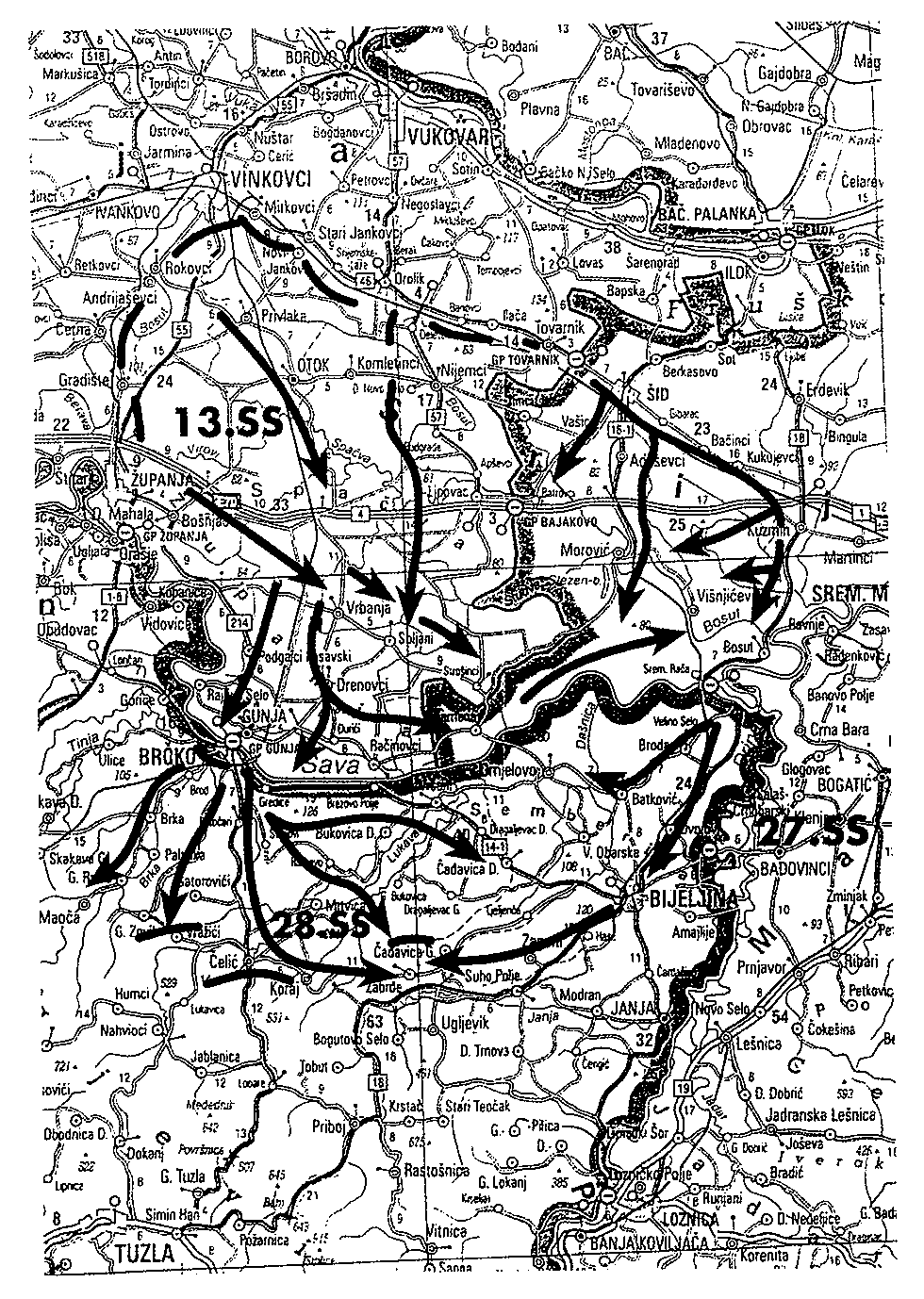 Above: movement from Op. Wegweiser into the crossing (Op. Sava).
Above: movement from Op. Wegweiser into the crossing (Op. Sava).
A pioneer shares his memory of crossing the Sava over to Bosanska Racha:
“I was wounded then trying to obscure the movement of our maneuver element with smoke. A shell hit near me and threw me back.” – M.N. Pionier 14. March ‘44
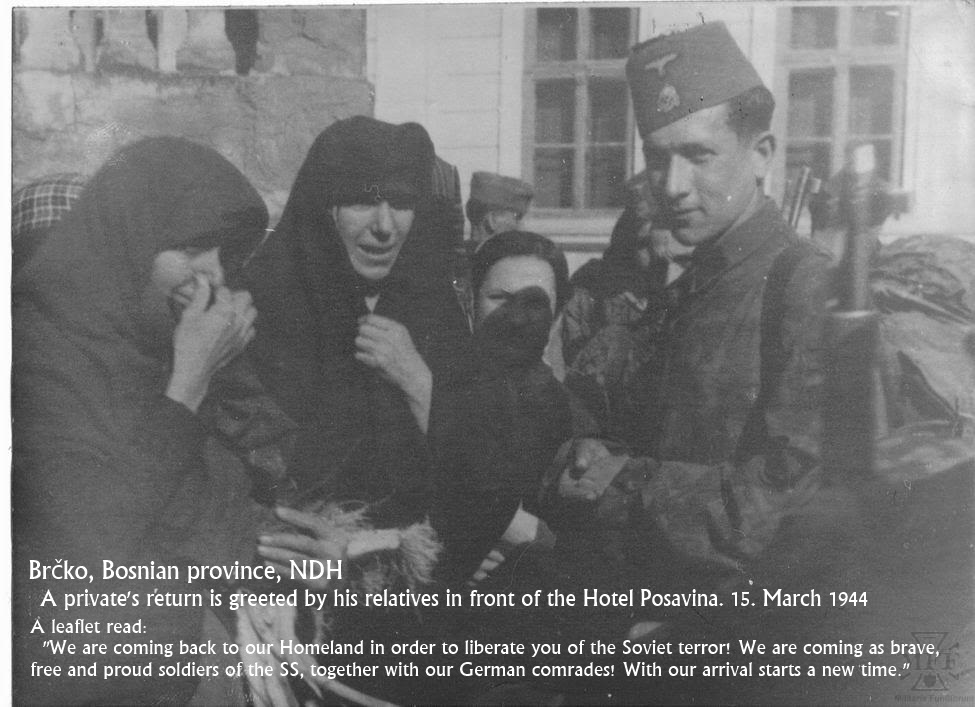
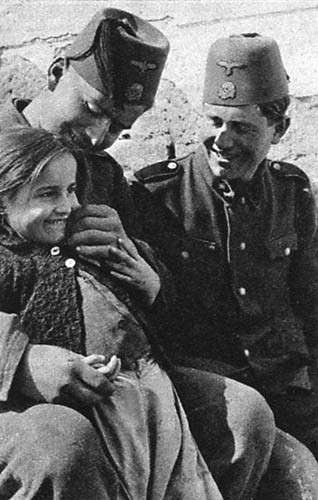
“We were proper soldiers. The next morning at formation, our commander greeted us with “Heil Schutzstaffel!” to which we replied Heil Hitler! The Germans had taught us everything that was important in combat. How to wage war and how to keep safe while at it, everything a soldier needed to know, everything from the needle to the cannon. In those days we were truly well armed. Whenever the “marketenderware” (commissary) came around we were able to purchase all those things that were usually scarce (for a civilian).” A.A
Ambush at Brezovo Polje 15.III.1944
The lead elements of the division were met by a company sized ambush at Brezovo Polje. The SS men simply reorganized and doggedly advanced towards Bijeljina. The partisan company simply pulled back to its parent battalion. The 16. Vojv. Div diary nonetheless tells of a reckless German charge countered by the partisans with ground changing 2-3 times before the partisan company had to finally withdraw, leaving the SS unit badly bruised and beaten (the SS unit in question may have been the Albanian battalion). Elsewhere, the 6th Co. 28th Regt crosses the Sava, reports 7 partisans KIA and the enemy leaving the woods in front of them.
Aufkl. Abt 13 and the lead elements of II/28 advanced rapidly southward toward Celic coming within 20km of 16th Vojv. HQ. At Koraj the recon troops find the enemy dug in and are forced to return fire, eventually calling in mortars and artillery on the entire village. The partisan ultimately leave with 36 dead and 60 wounded (here the Serb historian Sogic boasts of 350 SS men killed or wounded with 50 partisan dead, 82 WIA and 41 MIA. If we take his claim seriously it would mean that both Aufkl. Abt. 13 and II/28 were seriously hobbled by this little skirmish).
*Partisan supply problems leave some men with only 4-5 rounds of ammunition.
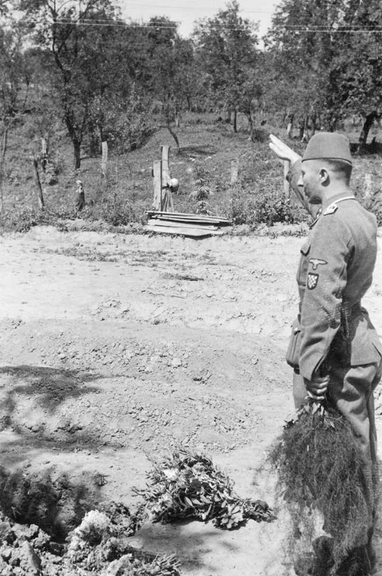
A member of the Division recollected on the first days of combat and the first casualties:
“We carried our first six fallen comrades for two hours to a cemetary in a nearby Muslim village. There we dug the graves and invited a cleric. The imam (division imam?) taught us not to wash the bodies of the shaheeds, but only to remove their boots. Soon our battalion commander arrived at the scene. Our platoon commander was a German and could not understand our language. Unlike other Germans he observed our customs with curiosity and respect. I found myself next to him in combat and despite the dust and cacophany of battle you could still hear the murmuring of “eshehedu…” He noticed this, looked at me but said nothing. Later when things calmed down, he asked me what it all meant. I simply answered that was our religious obligation when death was near. At the funeral, he stood off on the side with the other Germans and while others were impatiently waiting for the ceremony to be over, he listened and watched the rituals unfold. As we expressed our final farewells we formed up in line behind the imams (as was the custom). After which we fired off our salutes (by three platoons – squads?). The Germans (officers) extended their arms in the usual salute. Still in formation, we continued on. My platoon commander came to by side and said to himself: “a proper warrior’s religion.” Overhearing this I asked: “Why do you say that?
“You form up like soldiers even when addressing God.”
Until then I did not give it much thought to the impression made by our ranks, ranks of men standing shoulder to shoulder in which could not exist empty spaces.”
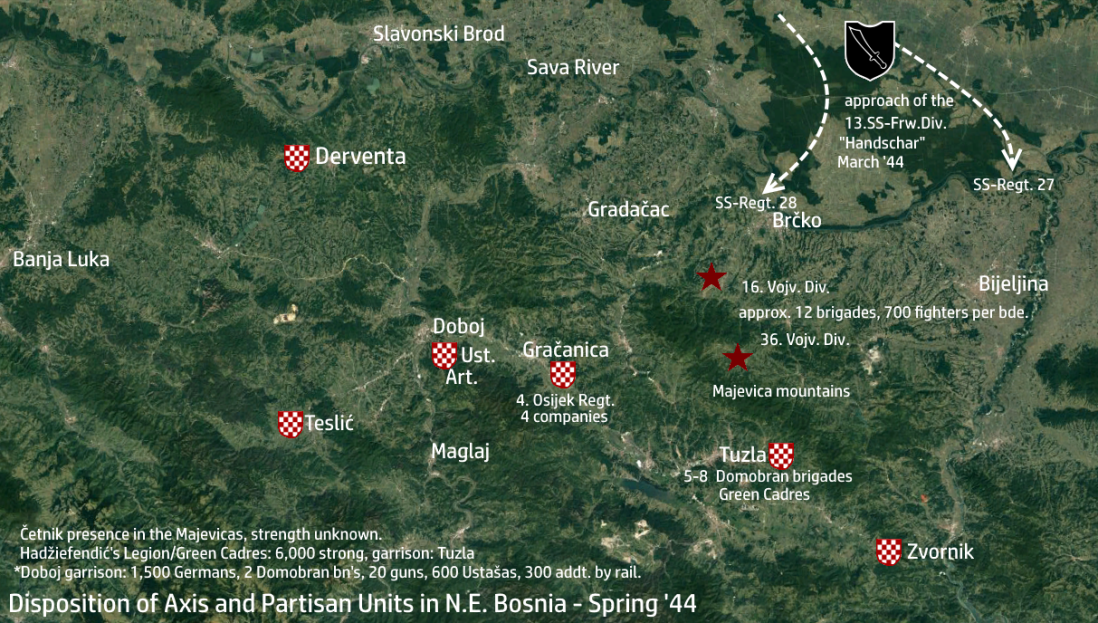
The Partisans take Notice
“The enemy has taken Bijeljina, fierce battles on the line between Celic – Koraj – Zabrde – Janja. Positions are passing into their hands. The enemy is sustaining heavy casualties (questionable). The enemy is terrorizing the countryside, killing women, children and looking for the bases where our wounded are. The losses for the 16th and 36th Divs are 300 ‘thrown out of ranks‘. Lack of ammunition. Positions at Celic-Koraj had to be abandoned due to heavy artillery and mortar fire (confirmed by the German account).”
Another partisan report promising to hold Handschar out of the Majevicas:
“The BH SS Division number 13 that launched an offensive on our units from the 14th of the last month, has, according to our sources, completed a concentration of its troops (25,000-30,000) in the sector of Bijeljina – Celic – Brcko. Our task: Keep the Majevica sector until as long as possible and frustrating the enemy’s advance or containing him on the Tuzla-Brcko line.”
20. March – “take all measures to protect the hospitals and supply bases.”
23.-26. March – “snowing” – a 40 man patrol out of Ratkovici runs into heavy partisan fire, calls in artillery to deal with it.
24. March – The division maintains its momentum by sending recon companies south.
26. March – SS units launch surprise attacks in bad weather:
– 2 companies of partisans attacked at Donji Zovik.
– a partisan battalion at Gornji Rahic is also attacked.
– Vrazice is attacked by the SS.
28.-29. March – nothing.
30. March – a reconnaissance in force (100 SS men) run into a partisan battalion, dispersing them with arty and mortars.
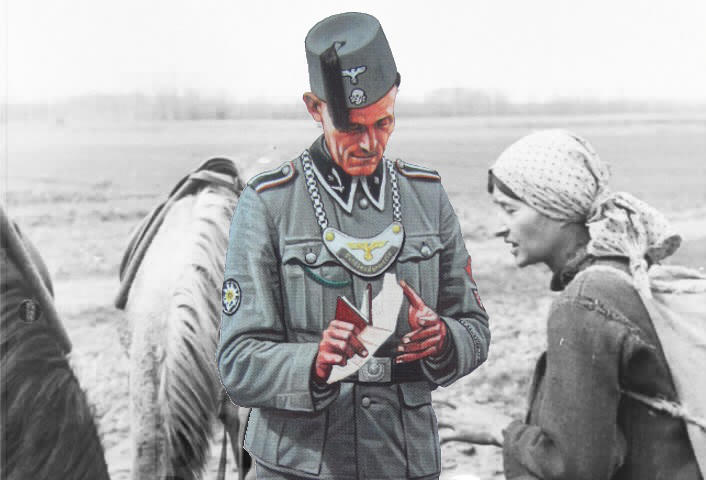
Having been thrown out of Gornji Rahic, the commander of III/36 reports an absurd casualty figure of 8 killed, 2 captured 57 wounded and 68 missing, claiming to have killed 70 and wounded 40 SS men. The Germans counted 124 partisan dead and 14 captured. The dead+missing partisan figure refers to all of the partisan dead counted by the German forces. Serb historian Sogic claims that in the three day period of 15.-18. March: around 350 SS killed/wounded, with an additional 70 dead, 40 wounded on 26. March. His colleagues Marinovic and Rebula give a wilder claim of 2,000 dead/wounded on 18. March alone. Peric gives the lowest estimate at 250 killed/wounded. Which is still a range of 250-2000. For the Battle of Lopare, Peric claims 400 dead, 778 wounded. Actual German records admit a loss that is slightly half that estimate, 250 dead, 528 wounded. All in all the highest claim for the March-June period is 2,750 killed/wounded, the lowest 1070.
For this period, Partisan unit diaries are filled with bogus surprise attacks on SS positions in which they completely rout the Bosnians. Jeremiah Peric – the perpetrator of the Srbosjek myth claims 2,000 casualties in the 5 days fighting at the foothills of the Majevicas for the 13th SS. Despite there only being 2 battalions of SS men committed to the fight. His colleagues claim the fighting went on 2 for weeks, when in reality the partisans could not sustain themselves on the defensive for longer than 5 days. Another 3rd Corps (partisan) report claims: 1100 SS men unfit for duty after the fighting. This would mean the entire II/28 being destroyed as a fighting formation.
Unternehmen Osterei 12.IV.1944
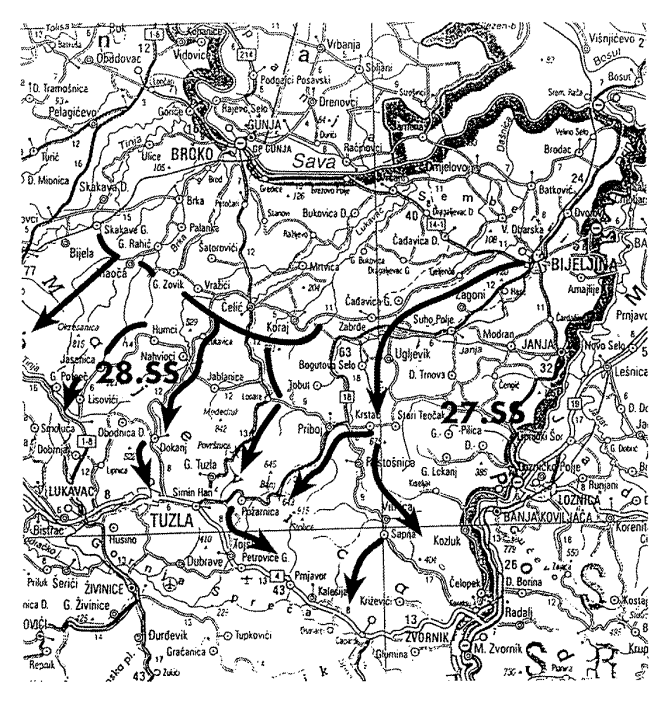 Following Unternhemen Osterei (12. April) the division continued its deliberate southward advance to the Majevicas. By mid April Aufkl. Abt 13 had already scouted out the western foothills of the Majevicas and made contact with the 1st Domobran (Home Guard) Mountain Detachment. By 20. April, the partisans exhausted from previous battles, evacuate 200 of their wounded and leave the Majevicas.
Following Unternhemen Osterei (12. April) the division continued its deliberate southward advance to the Majevicas. By mid April Aufkl. Abt 13 had already scouted out the western foothills of the Majevicas and made contact with the 1st Domobran (Home Guard) Mountain Detachment. By 20. April, the partisans exhausted from previous battles, evacuate 200 of their wounded and leave the Majevicas.
In a 28 April communique at 1630 Danilo Lekic to 16th and 36th Divs. discretely admits to the need for forceful foraging of food if operations are to continue.
“If we aim to continue resisting the advance of the 28th Regt.13 SS Division, we have to requisition food and livestock to support operations.”
The partisans therefore chose a softer target and resolve to attack the Domobran and Green Cadre units in the villages of Jajice, Memici, Kalesija, Prnjavor, Miljanovice, Rajnice Lipovice, Gornje Petrovice and Medjas. The villages are plundered for food and livestock, where an “energetic collection of food and livestock takes place.” The spring offensives against the Handschar division had exposed the weakness of partisan logistics. The winter prior to the arrival of the SS division, the two divisions had been largely concerned with providing food to their troops. Footwear was also in short supply.
The fact that the partisans would attack neutral Muslim villages confirms the accounts of Handschar men and the heavy handed nature of the communists.
